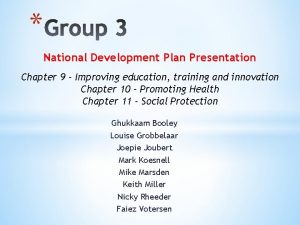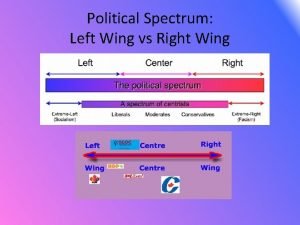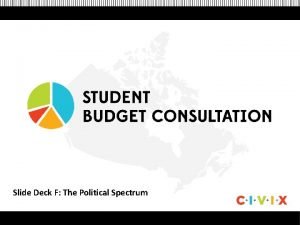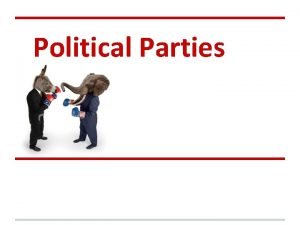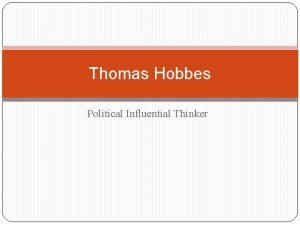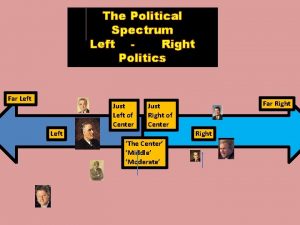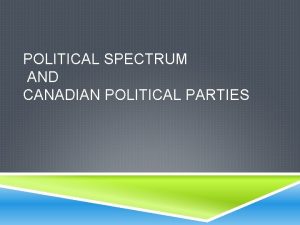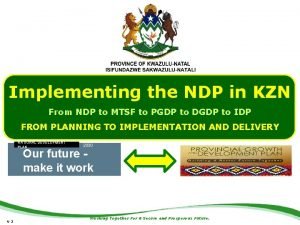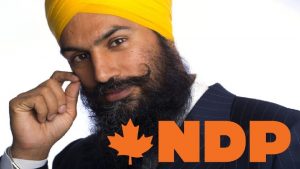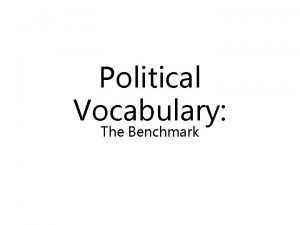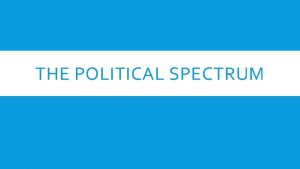Canadian Politics The Political Spectrum Left NDP far










- Slides: 10

Canadian Politics

The Political Spectrum Left (NDP, far left is Communist) Lots of government involvement Social Welfare (Socialism) Centre (Liberal) Basic social welfare Small government to encourage business Focus on individual rights and freedoms Right (Conservatives, far right is fascist) Very little government involvement Laws dictated by moral code

Division of powers • Split between federal Provincial and Municipal • Generally bigger the project the higher the parliament • Municipal – roads and small laws • Provincial – education • Federal – defense

Elections • Done for all levels of government • People vote for own area • Federal – Constituency; Provincial – riding; Municipal – district • Use First Past the Post • Proportional Representation is alternative • Political or voter apathy (turnout usually around 50% for fed and lower for others)

Political Parties • • NDP Liberal Conservative Bloc Quebecois Greens Single issue parties Independents

Government • Separate for federal and provincial • MPs (fed) or MLAs (Prov) sit in House of Commons • Government • Official Opposition • Can be Majority or Minority Government or even coalition • Leader of government is Prime Minister (Federal) or Premier (Provincial)

Branches of Government • Executive Branch (Cabinet – makes decisions) • Legislative Branch (Parliament – House of Commons and senate - debates and approves bills) • Judicial Branch (Judges – checks legality and can force changes) • Media (4 th estate) – is it too concentrated?

Making laws – Stage 1 • Private Member or public bills • Public comes from Government - much more common • 1 st reading – introduction • 2 nd reading – debate and suggested ammendments • Committee – debate detail and suggest changes • 3 rd reading – debate and vote in Ho. C

Making laws – Stage 2 Passed to appointed Senate Debate and can suggest amendments and block Sent back to parliament if changed Once approved goes to Governor General for approval • GG is Queen’s representative and signs bill into law • Order-in-council – PM can bypass parliament – used for government appointments • •

Public Influence • Lobbyists (companies or organisations ask and suggest changes – too powerful? ) • Petition • Protests/demonstrations • Civil disobedience • Political violence • Strikes (organised by unions)
